"Era un caldo pomeriggio del luglio 1841, afoso, ozioso, sonnolento ....
persino gli uccelli del parco del castello di Belvoir, la sontuosa residenza dei Duchi di Rutford, sembravano concedersi un silenzioso riposo tra il fresco delle fronde degli alberi secolari, ma Lady Anna Stanhope non riusciva ad avere quiete, sentiva sì una forte sonnolenza, ma lo stomaco troppo vuoto le procurava un'irrequietezza che al riposo era del tutto contraria, ed il tempo sembrava non scorrere mai ....
'Non era possibile lasciare trascorrere così tante ore senza mangiare nulla, a metà del pomeriggio era normale che la cogliesse una certa spossatezza', si diceva, anzi, si chiedeva come facessero gli altri a non stare male; erano le quattro del pomeriggio, molte ore erano trascorse da quando alla tavola imbandita del Duca John Manners avevano servito il luncheon, il pranzo, un pasto molto leggero, fatto di una portata di carne fredda e qualche sandwich, accompagnati da un bicchiere di ale ... e quante ancora la separavano dal supper, la cena, che si teneva a tarda sera ?
No, non aveva più la forza di resistere a quello che sembrava un sacrificio del tutto inutile e privo di senso, era stanca di trascorrere il pomeriggio in letto solo perchè le forze le venivano meno, solo perchè la coglieva quello che lei stessa definiva "un senso di cedimento" 1 !
Impugnando l'estremità della corda che era collegata ad uno dei tanti campanelli che raggiungevano i domestici nelle cucine, chiamò a sè una cameriera del Duca chiedendole che le venisse servito su di un vassoio del tè, rigorosamente Darjeeling, dei panini, burro, qualche cucchiaiata di marmellata ed un po' di torta da accompagnare al tè.
Inutile dire che dopo aver consumato questo spuntino lady Anna si sentì del tutto ristorata e pronta ad affrontare una deliziosa passeggiata, avendo persino recuperato un ottimo umore con cui intrattenere il resto degli ospiti facenti parte della compagnia in vacanza all'ambito castello."
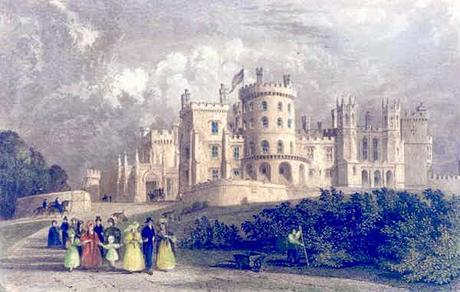
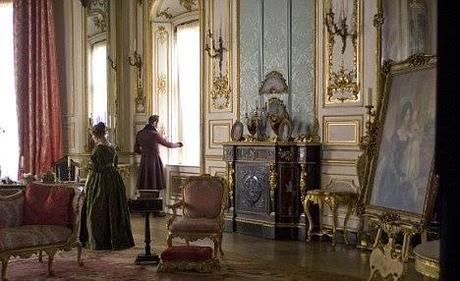
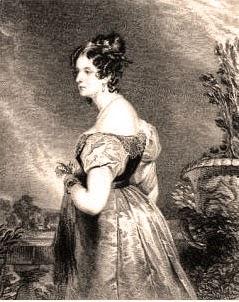
Va da sè che quello dell'afternoon meal divenne presto, inoltre, una simpatica occasione per trascorrere qualche minuto in gradevole compagnia, consacrando così il rito dell'afternoon tea che piacque molto anche alla regina Victoria, della quale Lady Anna Stanhope, Duchessa di Bedford, era una dama di compagnia, forse la più amata, che le fu accanto per lungo tempo, al punto che lo adottò immediatamente:
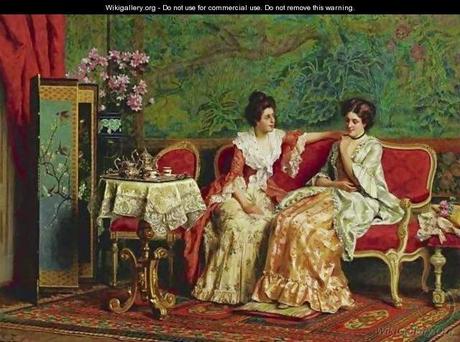
Guglielmo Zocchi ( 1874 - 1957 ), Tea Timealle cinque del pomeriggio le ladies, dopo una gradevole passeggiata, si cambiavano d'abito per sedersi e gustare una o più tazze di tè insieme con sandwiches e dolci seguendo un rito che divenne talmente solenne che con il 1855 venne creata la prima linea di abiti femminili 'per il tè'
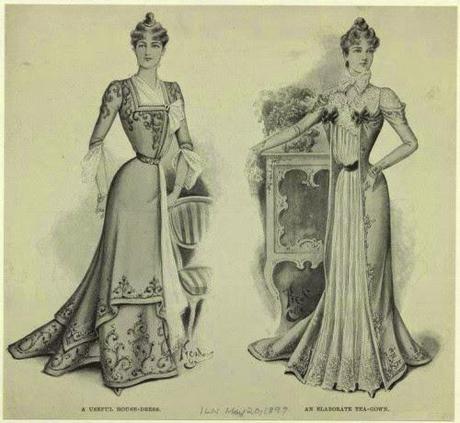

... ecco, a proposito di dolci, alla Duchessa di Bedford si deve non solo l'istituzione del rito del tea time di cui vi ho qui già parlato, ma anche la fama degli Scones e l'invenzione della Victoria Sponge, originariamente chiamata Victoria Sandwich ( o Sandwiches ), che all'afternoon tea da allora canonicamente si accompagnano.
~ GLI SCONES, PANINI DOLCI FATTI APPOSITAMENTE PER IL TE' ~
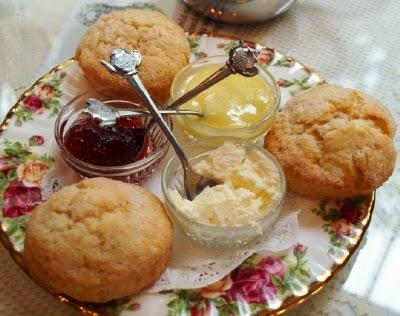
Sta di fatto che qualsiasi sia l'origine del termine, gli Scones nascono in Scozia agli inizi del 1500 come semplici panini preparati velocemente impastando farina di avena ed acqua senza lievito e cotti su pietra. Per servirli si era soliti tagliarli in 4 parti ricavandone così 4 triangoli.
Quando il lievito diventò disponibile per tutti, gli Scones cambiarono volto, fu più semplice cuocerli in forno, e divennero i biscotti ben lievitati che conosciamo oggi, preparati talvolta anche con farina di grano o d’orzo, con lievito e poco zucchero, spesso farciti con panna poco montata, marmellata o lemon curd.
Al capitolo XXXV, la ricetta 1786 del libro di Mrs Isabella Beeton, pubblicato nel 1861, così suggerisce di preparare quelli che al tempo erano ancora chiamati Tea-Cakes:
1786. INGREDIENTI. - £ 2. di farina, 1/2 cucchiaino di sale, 1/4 libbra di burro o strutto, 1 uovo, un pezzo di lievito tedesco delle dimensioni di una noce, latte caldo.
Esecuzione. - Mettere la farina (che dovrebbe essere perfettamente asciutta), in una terrina e mescolarvi il sale, e lavorarvi il burro morbido o lo strutto; poi battere l'uovo bene, mescolate ad esso il lievito e aggiungerli alla farina con il latte caldo, tanto fino ad ottenere una pasta liscia, e impastare bene. Lasciate lievitare vicino al fuoco e, quando sarà ben lievitata, formare con essa delle piccole torte; metterli sui di una teglia, lasciate lievitare ancora per qualche minuto prima di metterli nel forno e cuocere da 1/4 a 1/2 ora a temperatura moderata. Sono molto belli con l'aggiunta di un paio di ribes e un po 'di zucchero: dovrebbero essere messi dopo il burro nel composto di farina. Questi dolci devono essere imburrati, e mangiati caldi appena sfornati; ma, quando anche fossero stantii, sono molto belli spaccati e tostati; o, se immerso nel latte, o anche acqua, e posti poi in su di una teglia forno caldo ad intiepidire, essi saranno quasi come appena fatti.
Tempo - 1/4 a 1/2 ora.
Costo medio, 10d.
Sufficiente per fare 8 tortine da tè.
Stagione per farli: in qualsiasi momento. 2
~ VICTORIA SPONGE, LA TORTA DEGNA DI UNA REGINA ~
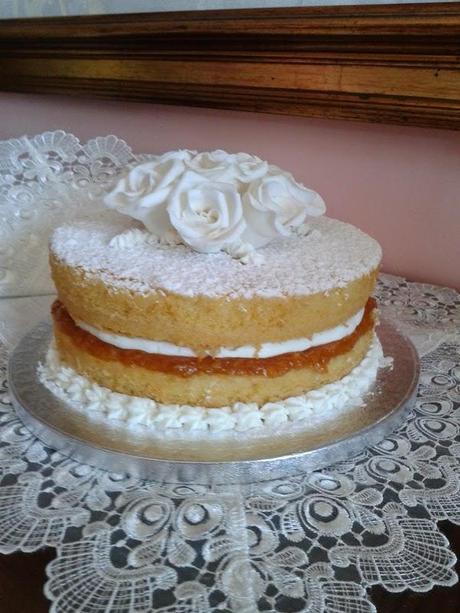
1491. INGREDIENTI. - 4 uova; l'equivalente del loro peso in zucchero pestato ( a velo ), il burro e la farina; 1/4 cucchiaio di sale, uno strato di qualsiasi tipo di marmellata.
Esecuzione. - Sbattere il burro a crema; setacciarvi la farina e lo zucchero; mescolate bene gli ingredienti insieme, e aggiungere le uova, che devono essere preventivamente accuratamente sbattute ( i bianchi separatamente dai tuorli ). Quando il composto è ben battuto per circa 10 minuti, imburrare una teglia Yorkshire per pudding, versarvi l'impasto e cuocere in forno moderato per 20 minuti. Lasciate raffreddare, spalmare metà della torta con uno strato di conserva, porre sopra l'altra metà della torta, premere le due parti insieme, e poi tagliarla in piccole fette larghe un dito; impilarli in diagonale su un piatto di vetro, e servire.
Tempo. - 20 minuti.
Costo medio, 1s. 3d.
Sufficiente per 5 o 6 persone.
Stagione per farla: in qualsiasi momento. 3
Era l'anno 1861, la regina lamentava la perdita del caro consorte Albert e da allora avrebbe vestito il lutto per il resto della sua vita; si ritirò presso la residenza di Osborne House, sita sull'Isola di Wight dove trascorrerà da allora la maggior parte dei suoi giorni e si dice che proprio negli anni ottanta, durante un soggiorno in quella sua residenza, ella abbia deciso di mutare il nome della torta a cui era affezionata da Victoria Sandwiches in Victoria Sponge, avvalorando la versione suggerita dalla Duchessa di Bedford, quella con l'aggiunta di panna.
Dimenticavo di dirvi, inoltre, che la vera Victoria Sponge è quella in cui i due dischi di pan di spagna sono cotti separatamente, in due teglie perfettamente identiche, perciò più alta ed ancor più soffice dell'originaria !
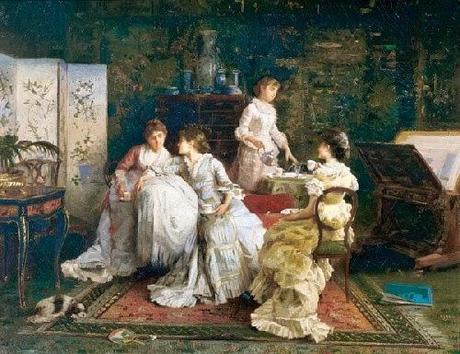
Alexander Rossi ( 1840 - 1916 ), Afternoon Tea
non appena il campanello del salotto suona per il tè, il valletto entra con il vassoio, che è stato precedentemente preparato; fa girare il vassoio tra i membri della compagnia, con panna e zucchero, essendone il tè ed il caffè generalmente privi, mentre un'altro inserviente, fa girare dolci, toasts, biscotti... o qualasiasi altra cosa buona da mangiare come richiesto, rimuovendo il tutto quando il momento del tè sarà concluso. 4
Ebbene, io mi sento di ringraziare la Duchessa di Bedford per tutto quanto ci ha lasciato e ... consideratevi tutti invitati ad un tè all'insegna dell'amicizia qui, nel salotto di My little old world, nel più autentico rispetto della tradizione anglosassone ... che ne dite ?
Vi aspetto !
A presto ♥
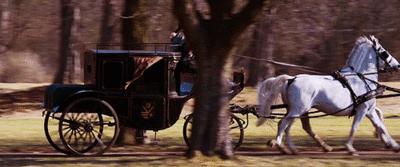

Bibliografia:
Bennet A. WEINBERG e Bonnie K. BEALER, Tè, caffè e cioccolata.I mondi della caffeina tra storie e culture, Donizelli, Roma, 2009
Isabella Beeton, Mrs. Beeton's Book of Household Management (Comprising Information for the Mistress, Housekeeper, Cook, Kitchen-maid, Butler, Footman, Coachman, Valet, Upper and under house-maids, Lady’s-maid, Maid-of-all-work, Laundry-maid, Nurse and nurse-maid, Monthly, wet, and sick nurses, etc. etc. - also, sanitary, medical, & legal memoranda;) with a history of the origin, properties, and uses of all things connected with home life and comfort., S. O. Beeton Publishing, London, 1861
- disponibile on-line al seguente indirizzo:http://ebooks.adelaide.edu.au/b/beeton/isabella/household/
Citazioni:
1 - Bennet A. WEINBERG e Bonnie K. BEALER, Tè, caffè e cioccolata.I mondi della caffeina tra storie e culture, Donizelli, Roma, 2009, pag. 198
2 - Isabella Beeton, Mrs. Beeton's Book of Household Management (Comprising Information for the Mistress, Housekeeper, Cook, Kitchen-maid, Butler, Footman, Coachman, Valet, Upper and under house-maids, Lady’s-maid, Maid-of-all-work, Laundry-maid, Nurse and nurse-maid, Monthly, wet, and sick nurses, etc. etc. - also, sanitary, medical, & legal memoranda;) with a history of the origin, properties, and uses of all things connected with home life and comfort., S. O. Beeton Publishing, London, 1861, cap. 35
3 - Isabella Beeton, op. cit., cap. 294 - Ibidem, cap. 41

It was a hot afternoon in July 1841, sultry, lazy, sleepy ....
even the birds in the park of the castle of Belvoir, the sumptuous residence of the Dukes of Rutford, seemed to enjoy a quiet rest among the cool leaves of the trees, but Lady Anne Stanhope couldn't be quiet, she felt so strong sleepiness, but her too empty stomach caused her a restlessness that was completely contrary to the rest, and time seemed to slide ever ....
'It wasn't possible to leave to spend so many hours without eating anything, in the middle of the afternoon it was normal that a certain fatigue caught her', she said to herself, indeed, she wondered how the others couldn't feel bad; It was four o'clock in the afternoon, several hours had passed since at the dining table of the Duke John Manners they had served the luncheon, a very light meal, consisting of a flow of cold meat and a few sandwiches, accompanied by a glass of ale... and how many still separated her from supper, the dinner, which was held late in the evening?
No, no longer she would have the strength to resist to what looked like a totally useless and meaningless sacrifice, she was tired of spending her afternoon in bed just because her strength was beginning to fail, just because what she herself called "a sense of failure " caught her ! 1
Holding the ends of the rope that was connected to one of the many bells that reached the servants in the kitchen, she called her a Duke's maid asking her that it was served on a tray some tea, strictly Darjeeling, sandwiches, butter, a few tablespoons of jam and a cake to accompany the tea.
Needless to say, after consuming this snack Lady Anna felt completely refreshed and ready to take on a delightful walk, having even recovered a good mood with which entertain the rest of the guests which were part of the company on holiday at the realm castle.
- picture 1
- picture 2
- picture 3
It goes without saying that the afternoon meal became soon also a nice opportunity to spend a few minutes in pleasant company, thus consecrating the ritual of the afternoon tea, that also very pleased Queen Victoria, of which Lady Anne Stanhope, Duchess of Bedford , was a lady-in-waiting, perhaps the most beloved, who was beside her for a long time, to the point that she immediately 'adopted' it:
- picture 4 - Guglielmo Zocchi ( 1874 - 1957 ), Tea Time
at five o'clock in the afternoon the ladies, after a pleasant walk, changed their clothes to sit and enjoy one or more cups of tea with sandwiches and cakes along with a ritual that became so solemn that in 1855 was created the first line female 'tea gowns'
- picture 5
- picture 6
well ..., talking of sweets, the Duchess of Bedford must be not only the establishment of the ritual of tea time which I have already spoken here, but also the reputation of the invention of the Scones and Victoria Sponge, originally called Victoria Sandwich (or Sandwiches), which at the afternoon tea since then canonically are accompanied.
~ SCONES, SWEET BUNS ESPECIALLY MADE FOR TEA ~
- picture 7 on the left - Their name sounds quite old, loosely tied to the English language and in fact there are many clues and guesses on the possible etymology of the word 'scone': some scholars trace it to the Gaelic term 'sgonn' meaning 'blob' or 'big mouthful ', others from the Dutch word 'schoonbrot', which means 'good bread', but there are also those who believe that it comes from the Stone of Destiny, which is a place in the city of Scone, the ancient capital of Scotland, where kings were crowned (a curiosity: on the Stone of Destiny the UK monarchs are crowned still today ! )
The fact is that, whatever the origin of the term is, Scones were born in Scotland in the early 1500s as simple sandwiches prepared fastly by mixing oatmeal and water without yeast and baked on stone. To serve it was customary to cut them into 4 pieces deriveing 4 triangles.
In Chapter XXXV, the recipe number 1786 of the book of Mrs. Isabella Beeton, published in 1861, suggests to prepare those, at the time, were still called Tea Cakes:
1786. INGREDIENTS. — 2 lbs. of flour, 1/2 teaspoonful of salt, 1/4 lb. of butter or lard, 1 egg, a piece of German yeast the size of a walnut, warm milk.Mode. — Put the flour (which should be perfectly dry) into a basin mix with it the salt, and rub in the butter or lard; then beat the egg well, stir to it the yeast, and add these to the flour with as much warm milk as will make the whole into a smooth paste, and knead it well. Let it rise near the fire, and, when well risen, form it into cakes; place them on tins, let them rise again for a few minutes before putting them into the oven, and bake from 1/4 to 1/2 hour in a moderate oven. These are very nice with a few currants and a little sugar added to the other ingredients: they should be put in after the butter is rubbed in. These cakes should be buttered, and eaten hot as soon as baked; but, when stale, they are very nice split and toasted; or, if dipped in milk, or even water, and covered with a basin in the oven till hot, they will be almost equal to new.
Time. — 1/4 to 1/2 hour.
Average cost, 10d.
Sufficient to make 8 tea-cakes.
Seasonable at any time.
~ VICTORIA SPONGE, THE CAKE FIT FOR A QUEEN ~
- picture 8 on the right - As mentioned above, that fateful afternoon, the Duchess of Bedford asked, among the other things, that it was brought her a cake; in the kitchen there was what the British call 'sponge', a base soft and fluffy, in fact, to be filled as pleased and / or cover with icing, cream, chocolate ... Lady Anna had it cut in two disks and put between them a layer of jam and butter ... She was delighted, but according to her taste butter could be substituted with further success and delight to the palate with cream whipped very soft, just like as British people do prefer ... Queen Victoria was excited by this new cake too, in every afternoon tea of hers couldn't miss this great sweet sandwich that was named in her honor Victoria Sandwiches from the appearance of the slices in which it was served; with this name we can find it in the increasingly precious volume by Mrs. Beeton in Chapter XXIX, where we read the original recipe:
1491. INGREDIENTS. — 4 eggs; their weight in pounded sugar, butter, and flour; 1/4 saltspoonful of salt, a layer of any kind of jam or marmalade.
Time. — 20 minutes.
Average cost, 1s. 3d.
Sufficient for 5 or 6 persons.
Seasonable at any time.
It was the year 1861, the Queen lamented the loss of her beloved consort Albert and since then she'll dress in mourning for the rest of her life; she retired at the residence of Osborne House, located on the Isle of Wight, where she'll spend most of her days and it is said that it belongs to the eighties, during a stay in this residence, her decision to change the name of this cake, which was her favourite in absolute, from Victoria Sandwiches to Victoria Sponge, corroborating otherwise the version suggested by the Duchess of Bedford, the one with the addition of cream.
I forgot to tell you, also, that the real Victoria Sponge is that in which the two disks of sponge cake are baked separately in two perfectly identical baking-pans, and so even higher and softer tha the original one !
- picture 9 - Alexander Rossi ( 1840 - 1916 ), Afternoon Tea
Well, I feel to thank the Duchess of Bedford for everything she has left us all ... consider yourself invited to a friendship - tea here, in the living room of My little old world, in the purest respect of the Anglo-Saxon tradition, ... what do you think about it ...?
See you soon ♥
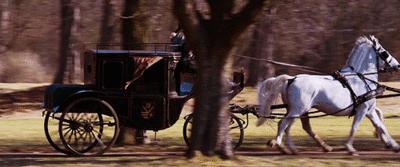

Bibliography:
Bennet A. WEINBERG e Bonnie K. BEALER, Tè, caffè e cioccolata.I mondi della caffeina tra storie e culture, Donizelli, Roma, 2009
Isabella Beeton, Mrs. Beeton's Book of Household Management (Comprising Information for the Mistress, Housekeeper, Cook, Kitchen-maid, Butler, Footman, Coachman, Valet, Upper and under house-maids, Lady’s-maid, Maid-of-all-work, Laundry-maid, Nurse and nurse-maid, Monthly, wet, and sick nurses, etc. etc. - also, sanitary, medical, & legal memoranda;) with a history of the origin, properties, and uses of all things connected with home life and comfort., S. O. Beeton Publishing, London, 1861
- disponibile on-line al seguente indirizzo:http://ebooks.adelaide.edu.au/b/beeton/isabella/household/
Quotations:
1 - Bennet A. WEINBERG e Bonnie K. BEALER, Tè, caffè e cioccolata.I mondi della caffeina tra storie e culture, Donizelli, Roma, 2009, pg. 198
2 - Isabella Beeton, Mrs. Beeton's Book of Household Management (Comprising Information for the Mistress, Housekeeper, Cook, Kitchen-maid, Butler, Footman, Coachman, Valet, Upper and under house-maids, Lady’s-maid, Maid-of-all-work, Laundry-maid, Nurse and nurse-maid, Monthly, wet, and sick nurses, etc. etc. - also, sanitary, medical, & legal memoranda;) with a history of the origin, properties, and uses of all things connected with home life and comfort., S. O. Beeton Publishing, London, 1861, Chap. 35
3 - Isabella Beeton, op. cit., Chap. 294 - Ibidem, Chap. 41





